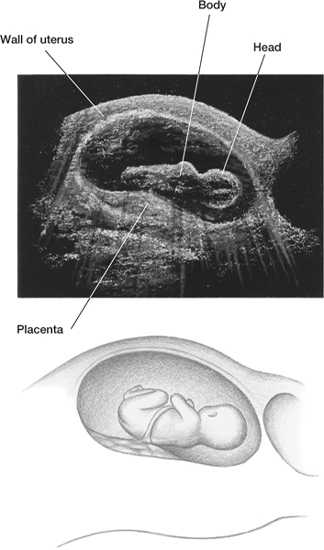1. How Big Is Your Baby?
At this point in development, the crown-to-rump length is 5⅔ to 6½ inches (14 to 16cm). Your baby weighs about 9 ounces (260g).
2. How Big Are You?
Congratulations—20 weeks marks the midpoint. You’re halfway through your pregnancy!
Your uterus is probably about
even with your bellybutton. Your healthcare provider has been watching
your growth and the enlargement of your uterus. Growth to this point
may have been irregular but usually becomes more regular after the 20th week.
Measuring the Growth of Your Uterus
Your uterus is measured to keep track of
your baby’s growth. Your healthcare provider may use a measuring tape
or his or her fingers and measure by finger breadth. He or she needs a
point of reference against which to measure growth. Some healthcare
providers measure from your bellybutton. Many measure from the pubic
symphysis, the place where the pubic bones meet in the middle-lower
part of your abdomen, 6 to 10 inches (15.2 to 25.4cm) below the
bellybutton. It may be felt near your pubic hairline.
Not every healthcare provider measures
the same way, and not every woman is the same size. And babies vary in
size. Measurements differ among women and are often different for a woman from one pregnancy to another.
If you see a healthcare provider you
don’t normally see or if you see someone new, you may measure
differently. This doesn’t mean there’s a problem or that someone is
measuring incorrectly. It’s just that everyone measures a little
differently.
Measurements are made from the pubic
symphysis to the top of the uterus. After this point, you should grow
almost ½ inch (1cm) each week. If you’re 8 inches (20cm) at 20 weeks,
at your next visit (4 weeks later), you should measure about 10 inches
(24cm).
If you measure 11¼ inches (28cm) at this
point in pregnancy, an ultrasound may be recommended to see if you’re
carrying twins or to see if your due date is correct. If you only
measure 6 inches (15 to 16cm), your due date could be wrong, or there
may be a concern about intrauterine-growth restriction (IUGR) or some
other problem.
Within limits, changing measurements are
a sign of fetal well-being and fetal growth. If they aren’t normal, it
can be a warning sign. If you’re concerned about your size and the
growth of your pregnancy, discuss it with your healthcare provider.
3. How Your Baby Is Growing and Developing
Your Baby’s Skin
The skin covering your baby began growing from two layers, the epidermis, which is on the surface, and the dermis,
which is the deeper layer. By this point, there are four layers. One of
these layers contains ridges, which are responsible for patterns on
fingertips, palms and soles. They are genetically determined.
Tip for Week 20
If you have an ultrasound test now, it
may be possible to find out the sex of the baby, but baby must
cooperate. You have to be able to see the genitals. Even if the sex
looks obvious, ultrasound operators have been known to make mistakes!
When a baby is born, its skin is covered by a white substance that looks like paste, called vernix.
It is secreted by the glands in the skin beginning around this week.
Vernix protects your growing baby’s skin from amniotic fluid.

Ultrasound of a baby at 20 weeks gestation
(fetal age—18 weeks). The interpretive illustration
may help you see more detail.
Hair
appears at around 12 to 14 weeks and grows from the epidermis. Hair is
first seen on the baby’s upper lip and eyebrow. This hair is usually
shed around the time of birth and is replaced by thicker hair from new
follicles.